"Johnny, to the answer! Tell me, child, who discovered America? " "Templars, ma'am!" Oh yeah ... Mr. Christopher Columbus was reportedly fought by the mysterious Knights of the Temple (and not only them).
In the beginning, there was a white spot on the map. Christopher Columbus said, "There must be a way to India," and he left. He found neither the road nor India. He stumbled upon a place completely unknown, but he himself did not come up with the idea that it was a whole new continent and probably died blissfully unaware. Today we call this somewhat less wild country America, and the discovery of it is much more complicated.
Who discovered America? Phoenicians, monks, Vikings?
There are opinions that before Columbus, in antiquity, America was discovered by ... Phoenicians. While it has been proven that the ocean can be crossed using uncomplicated technology, there are no convincing sources to prove that ancient travelers did so. So we put it in fairy tales. Also from the lives of the Irishman, Saint Brendan (died 577), we can read that this good and godly man was a great tramp.
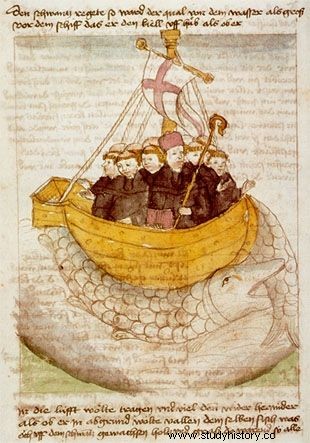
Saint Brendan, discoverer of America?
He tame wild sea creatures, calmed the winds, and even baptized a giant he met during one of his expeditions. Apparently, the saint even happened to reach America in a small leather-covered boat all the way to Newfoundland, and returned to Ireland five years after his departure. Well, also in this case blind faith at best.
The Vikings confirmed their American journeys. Archaeological finds from excavations in Greenland confirm that in the 10th century, Nordic sailors not only colonized this American island for a while, but also ventured further inland.
Probably the expedition ended relatively quickly with a spectacular failure, although there are (not entirely convincing) indications that the exploration of the new continent by the Vikings and their descendants continued over the next centuries. The proof of this is to be the Kensington Stone, with a runic inscription engraved on it, referring to a Swedish-Norwegian expedition from the 14th century.
How about the Templars?
Now let's get to the point. From the above theories, it would appear that, on his way to the New World (although he was looking for the most old one), Majesty Columbus overtook many. Well… this is not a complete list yet. As it turns out, the Genoese were also dressed in armored monks, famous for their excellent sailing skills. Who is that?
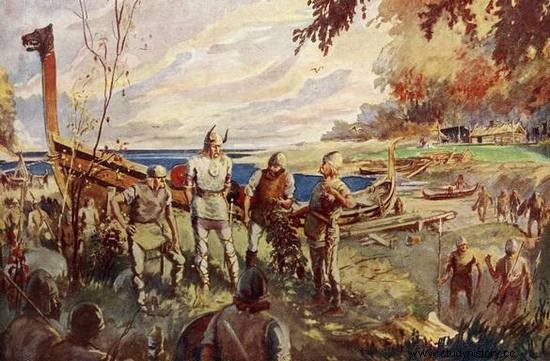
The Phoenicians may not have reached America's shores, but the Vikings must have made it.
In 1307, the Order of the Poor Knights of Christ and the Temple of Solomon, or Temple Knights for short, were abolished. They were called the Poor Brothers, or more often the Templars (from the Latin word templum meaning temple).
For more than half a millennium, the name of this order evokes associations with mysticism, mystery, the Holy Grail, or (in more recent times) popularized by Hollywood, a treasure of nations, or actually the so-called temple treasure.
The trial of the order, accused by Philip the Beautiful of the greatest atrocities, contributed to such a location of the Templars in culture. On Friday, October 13, 1307, an extraordinary secret operation took place, resulting in the arrest of almost all members of the congregation in France.
Well, it is worth adding here that from that day, which triggered a series of unpredictable and fateful events, every Friday the 13th becomes bad luck.
Returning to the subject ... a handful of brothers escaped from the wave of arrests. Initially, they took refuge in England, but due to the propaganda of the French king, they did not feel safe here either. In order to escape the papacy, at the end of the 14th century, they decided to go west. The mysterious expedition was to center around Prince Henry Saint-Clair.
My boat sails through a stormy sea, you cannot see the shore, the wind blows in the sails ...
Sailing for a long time in the Mediterranean Sea, the Templars had to master both the art of navigation and other skills needed in sea migrations. They learned a lot from the Arabs. They learned things that European sailors had not dreamed of and put them into practice.
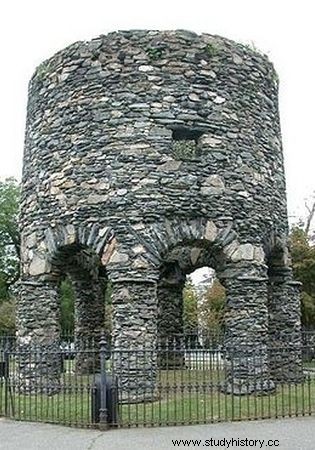
Templar Tower in Newport?
The Order's mission in the Holy Land required constant logistical support from the commandery in Europe. In the end, after the loss of Jerusalem, the Templars could attack Muslims only from the decks of ships, so perfect mastery of the art of seafaring became essential.
Martin Bauer in his book The Templars. Myths and Reality "presents the thesis that the Templars, thanks to their sailing skills, reached the shores of North America .
Their quest for the "new Jerusalem" led through Greenland and New Fundland to the eastern shores of Canada. Bauer, citing the opinion of another researcher, writes that the search took the brothers 14 years. During this time, they established several colonies, none of which, however, survived.
The whole concept was born as early as 1784, and a separate book by Frederick J. Pohl and Clarkson N. Potter has even been devoted to it in English.
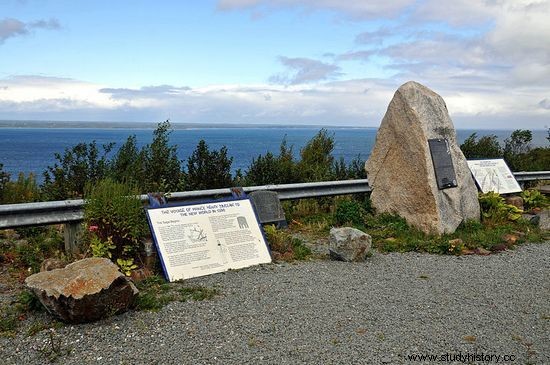
Monument in Guysborough, Nova Scotia, commemorating the expedition of Prince Henry Saint-Clair (photo:Dennis Jarvis; license CC BY-SA 2.0).
It was at the end of the 18th century that the German pastor Johann Reinhold Forster stated that the letters from around 1400, written by two Venetian navigators (Zeno brothers), about an expedition across the Atlantic under the command of a certain Zichmni, actually presented the history of Henry Saint-Clair's expedition.
Although most researchers considered the letters and the accompanying map a forgery, and Forster's idea of the Templar's trip to America as far-fetched, the legend has already been born. And with it, a whole host of clues and evidence.
They were digging in stone, building towers and picking up local squaws?
Apparently, traces of the Templar colony can be found even today on the North American continent. In the state of Massachusetts, there is a stone decorated with a bas-relief. This relief is supposed to depict a medieval knight, but the erosion damaged the show a lot.
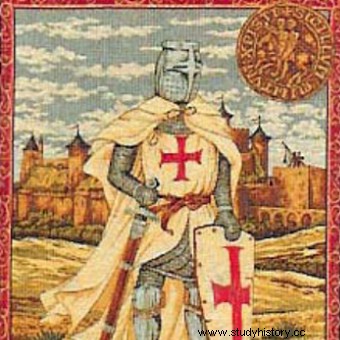
Now, to see a man in armor, you have to use your imagination quite a bit, which is probably the easiest way for fantasy fans. More evidence is reportedly in Newport (Rhode Island). There is a tower in the city that was to serve the Templars as a lighthouse and watchtower. At a time when Europeans inhabited the American continent, no one built structures in this style anymore, and yet the building is still standing.
In addition, the first settlers who came to Newport reportedly met strange people on the site, unlike other natives. The strangers were tall, swarthy, bearded and acted like a European… were they descendants of the Knights of the Temple?
One historian - Evan Pritchard - also suggested that a hero from the myths of the Mikmak Indian tribe named Glooscap was actually a visitor from Europe at the time. Probably none other than Henry Saint-Clair. If this is true, then Henryk must be congratulated on the reach of his travels! After all, the Mikmaks live in Canada today, not Rhode Island or Massachusetts.
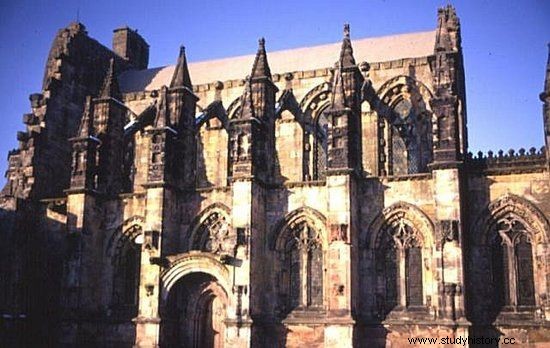
Rosslyn Chapel. According to some, the Templars left in it evidence of their trip to America (photo:Anne Burgess; license CC BY-SA 2.0).
This is not the end, because according to one version of history, the Templars not only reached America, but also ... managed to come back from it! In 1486 (6 years before the Columbus expedition) William Saint-Clair, grandson of Henry, built a chapel in Scotland, in which there are allegedly carvings depicting American plants. Proof as evidence - convinces some.
Finally a bit of gold
There is another peculiar theory regarding the Templars and America, this time southern. As it turns out, there are opinions that the order had… its colonies there.
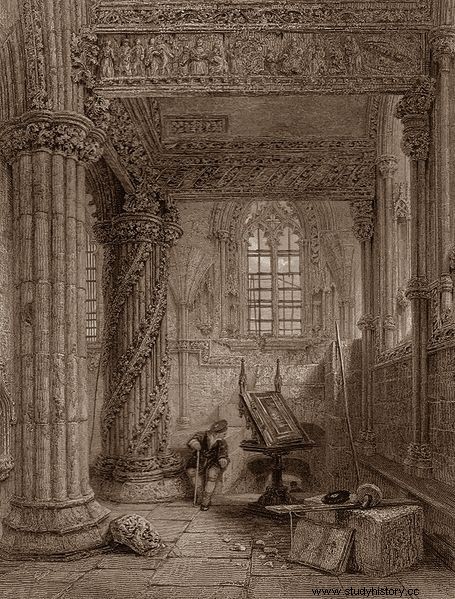
Rosslyn Chapel again. Its interior this time.
Moreover, the legendary treasure of the Knights Templar was to have its source in the local silver mines. The brothers were to regularly go on plundering trips to the Yucatan Peninsula, from where they transported looted valuables to their French base, La Rochelle.
Which of these theories can be considered probable or even true, and which to put into fairy tales, I leave to your judgment.
At the end, however, I honestly have to add one more small detail. In truth, not only has it not been proven so far that Henry Saint-Clair reached the lands of the future of the United States, but even… that he had any connection with the Templars at all. After all, the order was dissolved a good half a century before it was born.
Bibliography:
- Martin Bauer, Templars. Myths and Reality. Dolnośląskie Publishing House, 2004.
- Christopher Knight, Robert Lomas, The Second Messiah:Templars, the Turin Shroud and the Great Secret of Freemasonry , Fair Winds Press, 2001.
- Frederick J. Pohl, Clarkson N. Potter, Prince Henry Sinclair:His Expedition to the New World in 1398 , Nimbus Publishing, 1995.
